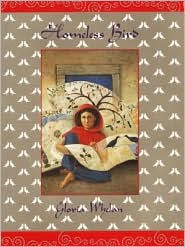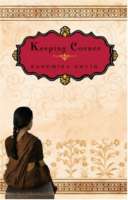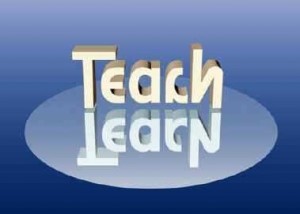Kathy G. Short, University of Arizona
Critically reading books set in global cultures is difficult when you only have surface knowledge about those cultures. In a global literature class, we found that reading a book in the context of other books provided us with perspectives that facilitated more critical reading. One effective strategy was to read paired books that were from the same culture or had similar themes, but provided differing perspectives. These pairings often exposed problematic issues, such as the domination of western views or assumptions about race, class or gender. The books in each pair were selected to reflect opposing points of view and so we were able to read the books against and beside each other, which supported us in uncovering problematic issues. We learned how to read critically as we read globally.
 One effective paired book set was Homeless Bird (Gloria Whelan, 2000) and Keeping Corner (Kashmira Sheth, 2007), novels about young girls who become child widows in India. Both books received starred reviews and are considered well-written, powerful novels, but differ in the source of their authorship. Whelan brings an outsider perspective to writing about India, which she came to know through research and traveling to the culture in her mind, while Sheth was born in India, came to the U.S. as a young adult, and grew up with a great-aunt who was a child widow. Our discussion focused on the differences in how the stories are told, not in judging the books as good or bad because of outsider/insider distinctions. We explored differences in what came to be represented in the books through the differing perspectives of the authors.
One effective paired book set was Homeless Bird (Gloria Whelan, 2000) and Keeping Corner (Kashmira Sheth, 2007), novels about young girls who become child widows in India. Both books received starred reviews and are considered well-written, powerful novels, but differ in the source of their authorship. Whelan brings an outsider perspective to writing about India, which she came to know through research and traveling to the culture in her mind, while Sheth was born in India, came to the U.S. as a young adult, and grew up with a great-aunt who was a child widow. Our discussion focused on the differences in how the stories are told, not in judging the books as good or bad because of outsider/insider distinctions. We explored differences in what came to be represented in the books through the differing perspectives of the authors.
 As we gathered in literature circles, many talked about finding Homeless Bird personally moving with an inspiring message.Then they read Keeping Corner and were struck by the rich details of daily life and culture that were missing from Homeless Bird. In fact, we realized that Homeless Bird read more like a fairy tale, with a focus on plot and a lack of detail about setting. The main character is caught in a downward spiral of negative events that pile up one after the other with stock characters like the evil mother-in-law, a “prince” who takes her away, and a happy ending. This fairy tale strategy made sense, since the author did not have intimate lived experiences in that culture. In contrast, we felt embedded in Leela’s life, culture, and time in Keeping Corner. We were immersed in her story of gradual awakening to issues of tradition, independence, and women’s rights. We lived the story with her rather than observing her story from a safe distance as we did with Homeless Bird. We knew the character in a more intimate way and were still with her as the story ended with hope and promise, but uncertainty.
As we gathered in literature circles, many talked about finding Homeless Bird personally moving with an inspiring message.Then they read Keeping Corner and were struck by the rich details of daily life and culture that were missing from Homeless Bird. In fact, we realized that Homeless Bird read more like a fairy tale, with a focus on plot and a lack of detail about setting. The main character is caught in a downward spiral of negative events that pile up one after the other with stock characters like the evil mother-in-law, a “prince” who takes her away, and a happy ending. This fairy tale strategy made sense, since the author did not have intimate lived experiences in that culture. In contrast, we felt embedded in Leela’s life, culture, and time in Keeping Corner. We were immersed in her story of gradual awakening to issues of tradition, independence, and women’s rights. We lived the story with her rather than observing her story from a safe distance as we did with Homeless Bird. We knew the character in a more intimate way and were still with her as the story ended with hope and promise, but uncertainty.
This experience convinced us on the power of reading books alongside each other and we went on to explore other types of paired books:
– Books with a similar theme, one set in a global culture and the other in our own familiar culture, to facilitate connections, such as The Composition (Antonio Skarmeta, 2003), set in the dictatorship in Chile with Friends from the Other Side (Gloria Anzaldua, 1997), set on the U.S./Mexico border, to consider issues of fear and the use of police intimidation.
– Books that contrast differing perspectives on the same historical event, such as When My Name was Keoko (Linda Sue Park, 2004), a Korean perspective on the Japanese occupation of Korea during World War II, and So Far from the Bamboo Grove (Yoko Watkins, 1986), the memoir of a Japanese child whose father was an occupier within Korea.
– Fiction and nonfiction on the same event and time period to provide a rich informational context for a story, such as Nory Ryan’s Song (Patricia Reilly Giff, 2002) with Black Potatoes: The Story Of The Great Irish Famine, 1845-1850 (Susan Bartoletti, 2005), on the Irish Potato Famine.
– Historical and contemporary stories of the same global culture to explore the dynamic and changing natures of cultures. We were not able to explore this paired set because so many of the global novels are historical and we could not pair them with a contemporary novel in the same culture.
Two professional references on paired books that are useful are:
Daniel Hade. (1997) Reading Multiculturally. In Violet Harris, ed., Using Multiethnic Literature in the K-8 Classroom. Christopher-Gordon.
Barbara Lehman, Evelyn Freeman & Patricia Scharer (2010). Reading Globally, K-8. Corwin.
Journey through Worlds of Words during our open reading hours: Monday-Friday, 9 a.m. to 5 p.m. and Saturday, 9 a.m. to 1 p.m. To view our complete offerings of WOW Currents, please visit archival stream.
- Themes: global books, Kathy Short
- Descriptors: Books & Resources, Debates & Trends, Student Connections, WOW Currents


I think that reading paired books is a great idea because it does give you different perspectives on a culture or tradition that you might not be familiar with. If there are two different versions of the same tradition or part of a culture, then it might be hard to decipher which version is correct. Reading paired books would be great for a compare/contrast project in the classroom though!
Paired books is helpful to make connections, think critically in relation to text, and view different perspectives of various cultures. In order to get a more accurate view on another culture it is important to read books that have different accounts since one version may not be completely authentic. Also, many cultures have varying races, traditions, classes and languages so even if one story is authentic that does not necessarily mean that all people from that country or culture have experienced that or live in that way. If there are more sources in relation to this topic I would like to know about them to get more ideas of books that can be paired together in relation to certain themes or countries.
To critically review and deconstruct Global and International literature is a learned craft. I could relate to the group that was pulled by an emotionally moving story. However, when you “live” a story once with a gifted author you find that your capacity to accept anything less than a richly laden text diminishes as fast as a sprite riding a wind wave.
These resources really help. Theoretically, I agree with all of the important reasons and explanations provided about pairing books. Moving out of teaching Kindergarten and into the older grades, I am not as familiar with books that make particularly good pairs. It is so helpful to have expert advice to tap into so easily. Thank you …
Reading a book within the context of another book really is challenging it seems to me. I think one way to approach it would be to have a set agenda and questions, as well as particular points and thing to look for before reading to help with the process. It is a great way to get deep and stimulating conversations going around these books.